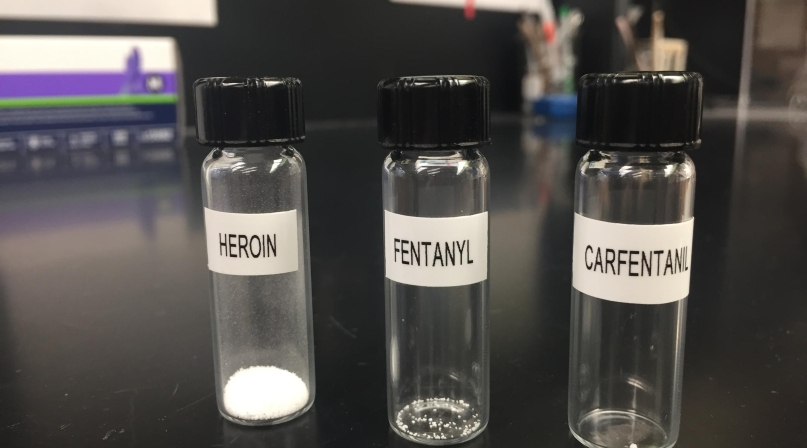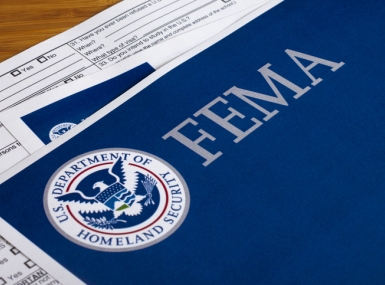Trump spotlights opioid epidemic
Upcoming Events
Related News

President begins process for emergency declaration for opioid abuse crisis
President Trump has set in motion a federal state of emergency regarding the nation’s ongoing opioid epidemic. The announcement, Aug. 10, came several days after the White House’s Commission on Combating Drug Addiction and the Opioid Crisis recommended urgent action on the epidemic in its interim set of policy recommendations. Opioid overdoses accounted for 33,000 deaths in 2015 — more than any other year on record, according the Centers for Disease Control and Prevention.
Learn More
Access the report and more information about NACo’s response to the opioid epidemic
Federal emergency declarations are typically reserved for short-term crises related to a natural disaster or contagious disease outbreak. The federal government’s emergency response to a crisis driven by substance abuse will likely differ from its response to a hurricane or the Zika virus; but in either situation, declaring a state of emergency allows the government to rapidly mobilize and deploy treatment resources with less administrative oversight.
Although details are still emerging, experts predict that the federal government’s emergency declaration on the opioid epidemic could empower states to waive certain Medicaid regulations around mental health services; direct federal funds to support medically assisted treatment for opioid addiction; and provide states with fast-track, model legislation to make the overdose antidote Naloxone more available to the public.
Commission calls for emergency declaration
The recommendation to declare a federal state of emergency was one of several proposals contained in the White House opioid commission’s first report. The other proposals offer long-term policy action that could be taken to combat the opioid epidemic, which may be crucial since emergency declarations typically expire after a year and operate under certain budget constraints.
The report’s recommendations reflect the guidance of public health advocates in its focus on expanding treatment options through maximizing the authority of relevant federal agencies and programs.
The commission is expected to issue a more comprehensive set of guidelines in October.
The recommendations include:
- Mandate prescriber education initiatives in medical and dental schools aimed at preventing patient addiction
- Provide states with model legislation to dispense the overdose antidote Naloxone; and equip U.S. law enforcement officials with Naloxone kits
- Prioritize funding and resources to federal agencies to develop fentanyl (synthetic opioid) detection sensors to halt the flow of drugs through the U.S. Postal Service
- Streamline federal privacy laws to allow health professionals to share information across different providers and with patients’ family members; and
- Deliver federal backing and technical support to states to improve data sharing to track patient prescription data.
These recommendations are likely to require congressional approval and the chance for any immediate action is slim.
However, whether Congress adopts the commission’s recommendations remains to be seen. Lawmakers face a busy legislative calendar going into fall.
With just weeks left until the end of the fiscal year on Sept. 30, Congress is under pressure to act on several big-ticket items, including reauthorization of the Children’s Health Insurance Program, major reforms to the National Flood Insurance Program and finalizing FY2018 appropriations bills.
Emergency declarations at the state and local level
Prior to the president’s announcement, governors of six states (Alaska, Arizona, Florida, Maryland, Massachusetts and Virginia) had already declared public health emergencies in response to rising numbers of overdose-related deaths. In Arizona, for example, Gov. Doug Ducey (R) used an emergency declaration to tap into public health emergency funds that provided overdose-specific training for law enforcement officials.
Other states such as Alaska used emergency powers to stock naloxone in public spaces for limited time periods.
Some counties have also declared public health crises regarding the opioid crisis in their jurisdictions.
In 2016, New York’s Erie County Executive Mark C. Poloncarz issued an executive order declaring a public health crisis and ordering the formation of an Opioid Epidemic Task Force.
Responding to recommendations put forth by community organizations, the Erie County legislature approved proposals to create a 24-hour addiction hotline and provide county-wide training sessions on how to use Naloxone.
Proposals currently under consideration include equipping hospitals with more treatment beds and establishing safe disposal sites for prescription medications.
In 2016, NACo engaged in a joint effort with the National League of Cities to comprehensively assess the local response to the opioid epidemic.
In November 2016, the organizations published a joint report, A Prescription for Action, offering recommendations for reducing rates of opioid misuse, overdose and fatality through local, state and federal action.
Attachments
Related News

DHS releases FY 2026 funding opportunities for World Cup and Counter-UAS grants
The U.S. Department of Homeland Security (DHS) and the Federal Emergency Management Agency (FEMA) have released the FY 2026 Notices of Funding Opportunity (NOFOs) for two major new homeland security grant programs: the FIFA World Cup Grant Program and the Counter-Unmanned Aircraft Systems (C-UAS) Grant Program.

Sacramento County partners with tribe to solve Indigenous cases
The Sacramento County Sheriff’s Office and District Attorney’s Office are teaming up with the Wilton Rancheria Tribe to address the crisis through the creation of a Regional Missing and Murdered Indigenous Persons Task Force.

States file lawsuit challenging FEMA’s new rules on emergency management grants
On November 4, a coalition of 12 states filed a lawsuit against the U.S. Department of Homeland Security (DHS) and the Federal Emergency Management Agency (FEMA), alleging that recent changes to key emergency management grants are unlawful and could disrupt state and local preparedness efforts.